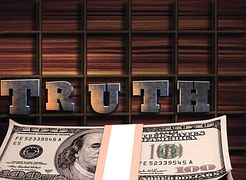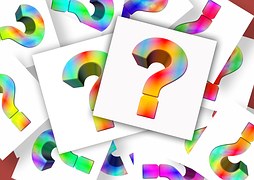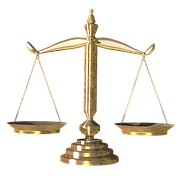How Not To Counterfeit

Truth and Counterfeit
What I thought was truth was counterfeit. It was only after I administered the drug and adjusted the flow level that I turned and tossed the empty container into the wastebasket. As it left my hands, I realized something wasn’t right. The neck of the vial didn’t feel the same.
Hurriedly, I pulled it out of the trash can and read the label. What I thought was KCL (Potassium Chloride) was not that at all. Instead of KCL, I administered Pavulon.
When a patient needs to be kept sedated and paralyzed so he doesn’t fight the respirator, sometimes he is “paralyzed” so he can get well. It’s a wonderful drug when it’s needed and when, of course, the patient is on a respirator.
‘Only problem was, this patient wasn’t on a respirator. In a few minutes, the medication would course through his veins, causing paralysis. He would be unable to breathe on his own. He would be at our mercy.
I clamped the tubing and let my supervisor know what happened. We changed the entire IV set even though the medication did not had time to reach his system.

Same size, same shape, same color
Obviously, I pulled the wrong vial off the shelf in the medicine room. Both KCL and Pavulon had yellow caps on the vials, and the vials were the same height. When I reached for the medication, I had no reason to think that the wrong medication had been stocked right next to the other KCL vials. It was always on the far end of the shelf to the right. KCL was stored on the left, always.
The only difference was the size of the neck of the vial. My supervisor looked at the shelf in the medication room and couldn’t tell the difference without reading the label. [Oh, you don’t need to tell me that I should have read the label.] She wondered how I picked up on the difference.
“Because,” I explained, “I’ve handled KCL vials daily for years and I know exactly how thick the neck of those vials is.” I could have been blind and I’d still have been able to tell the difference because of how it felt in my hands. The vial looked like truth, but it was counterfeit.
Our supervisor took action at once and the medication was moved to where it belonged. I re-learned to double-check my labels. I also learned to pay attention when I felt an urge that something wasn’t quite right. And yes, I had to fill out a medication incident report. I was so grateful I was not filling out a death notice.

That’s how it is with truth.
Exposure to truth helps recognize counterfeit
When you’ve been so exposed to it that you know Truth, you’ll be able to tell when something is false.
The secret is to handle Truth so much, so often, so regularly, that you can discern when something is false.
I’m told that bank tellers are taught to recognize counterfeit money, not by handling what is false, but by handling the real stuff. When you’ve handled what is real long enough, you’ll recognize counterfeit a mile away.
Today – just as in generations before us – people are clamoring about new truths, tolerance, and politics. It matters not on which platform one stands or from which pulpit he preaches. It doesn’t matter how vehemently it is proclaimed or how emotional the pull. In the long haul, it really doesn’t matter who teaches it or who has the latest revelation.
All that matters is this: is it Truth?

When was the last time you researched – really researched – what the Bible says about the things you believe? When was the last time you checked out the requirements in God’s Word for the choices you make or the people you date?
How long has it been since you’ve done an attitude check by using God’s word as the barometer instead of what someone else declares? When was the last time you went home and checked what you heard on Sunday morning with the Word?
How long has it been since you measured the standards of the business you own with the standards God has given? When was the last time you chose the political platform or social medias you use with the authority of God’s Word? How long has it been since you checked out the way you’re doing marriage with what God says?
The only thing that matters is if what is taught, proclaimed, and lived is plumb with the Word of God. If it doesn’t measure up, then it’s not truth. (That’s not original with me; it comes right from the heart of God.) Check out the 7th chapter of Amos, verses 7 and 8.
When you learn to know Truth, it will set you free. How do I know? Because I’ve experienced it, and because Jesus said so.

We need to make sure that the vial we choose is Truth that sets us free. It must not be a falsehood or counterfeit that ends up paralyzing ourselves and others.
How much time are we spending exposing ourselves to the Truth?

This is a repost from four years ago.







This is so true. Thank you!
Sometimes we become blind because we have always done it this way or because everybody does it. But most important is what God says.